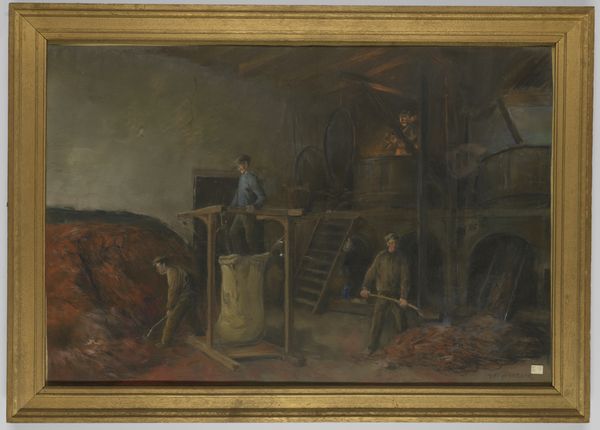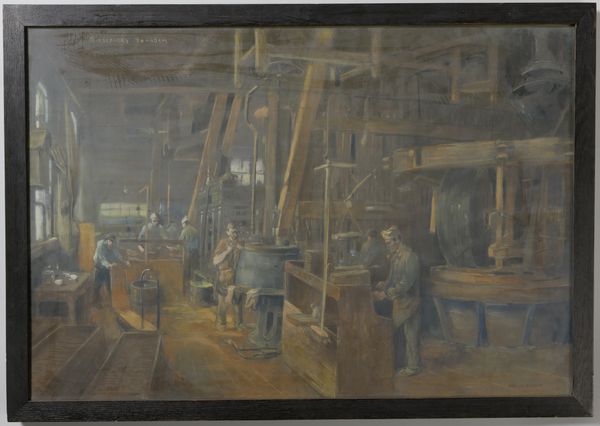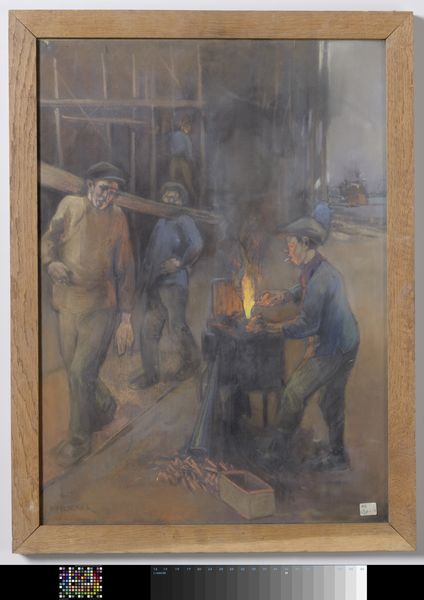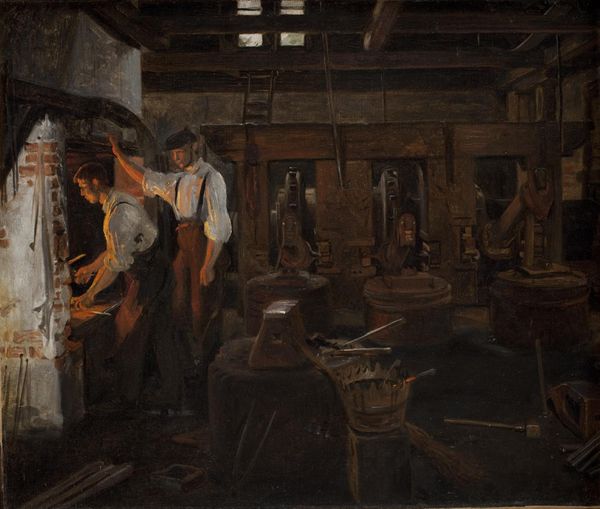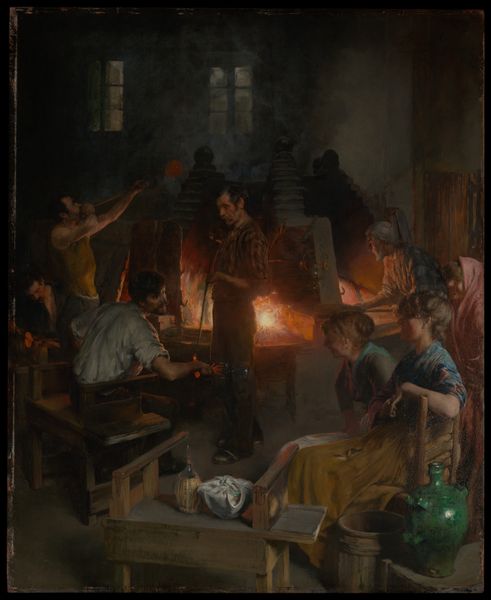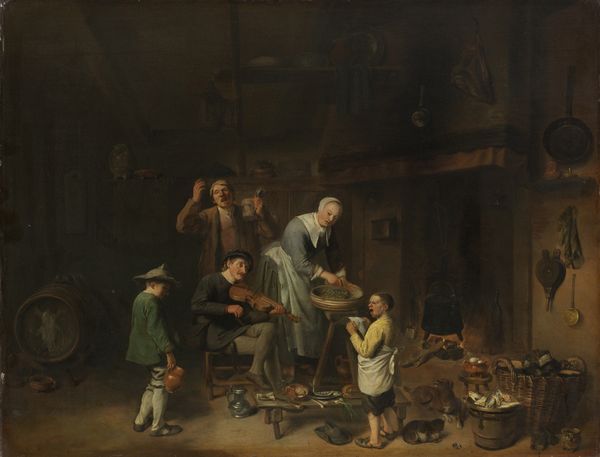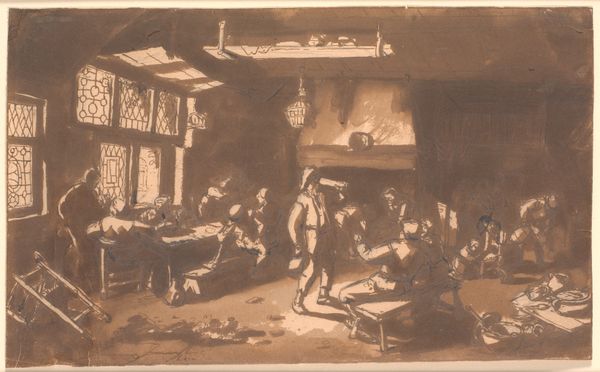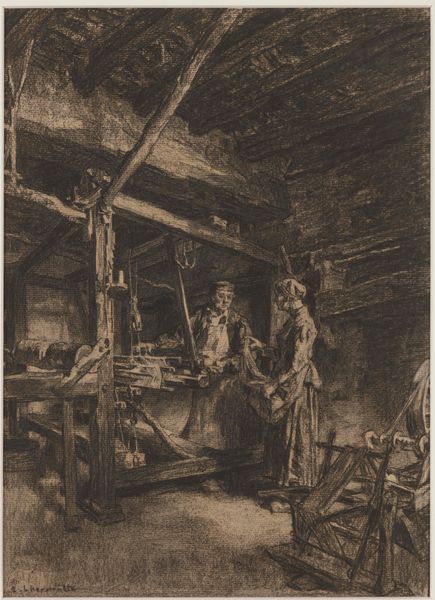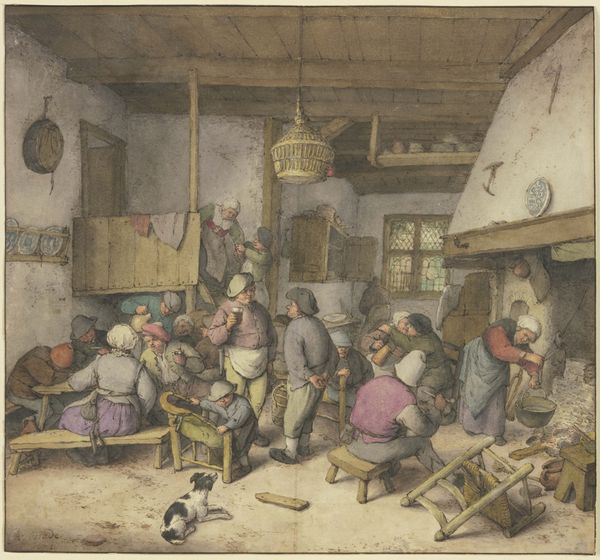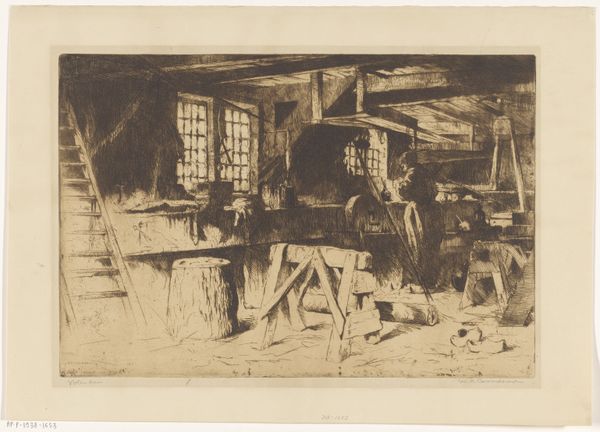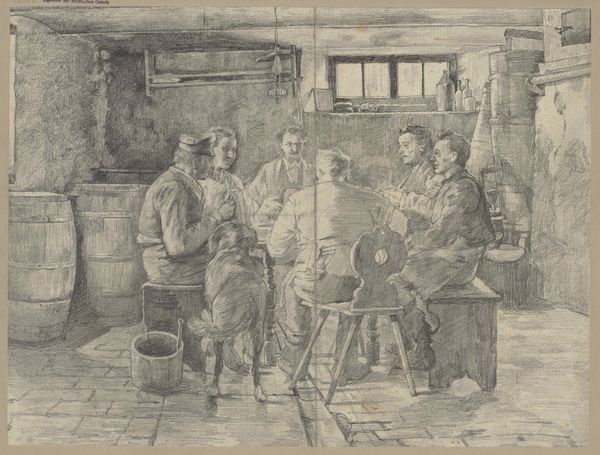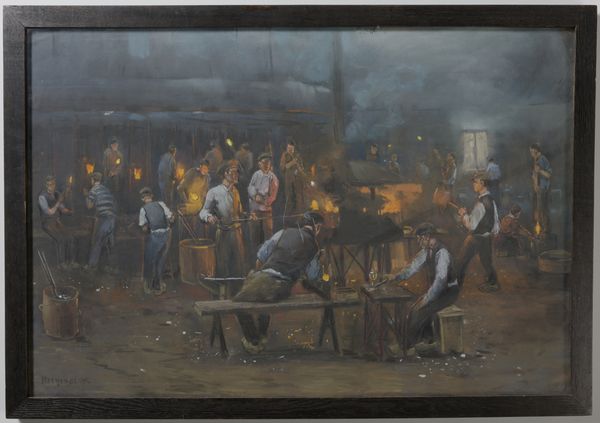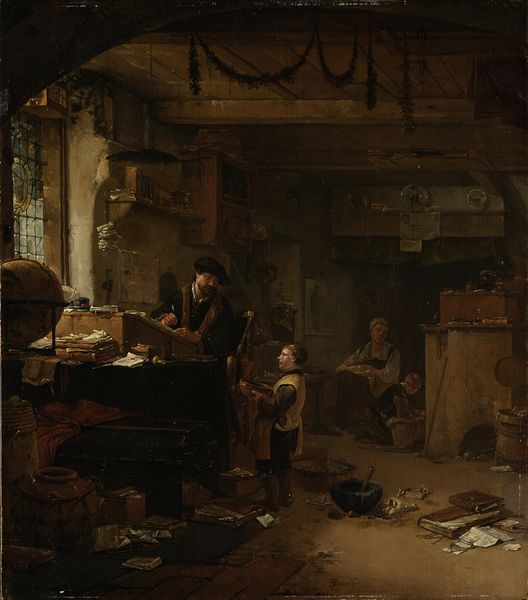
oil-paint
#
oil-paint
#
landscape
#
oil painting
#
cityscape
#
genre-painting
#
mixed media
#
watercolor
#
realism
Dimensions: height 63.5 cm, width 93 cm, height 71 cm, width 100.7 cm, depth 3.5 cm
Copyright: Rijks Museum: Open Domain
Curator: This somber oil painting pulls us directly into the Goedewagen earthenware factory in Gouda. It's titled "De aardewerkfabriek 'Goedewagen' te Gouda: de ovens," created sometime between 1871 and 1948 by Herman Heijenbrock. Editor: It has a remarkably hushed, almost reverential mood, doesn't it? The muted palette makes the activity appear more laborious and gritty; all those greys and browns emphasizing the raw labor. Curator: Precisely! Heijenbrock often focused on the social impact of industry, depicting factories and laborers with stark realism. You see how he’s highlighted the repetitive physical demands – the lifting, carrying, stoking… Editor: Yes, and how that impacts our understanding of the cultural position of these types of works. This is hardly some heroic depiction of labor but rather one which acknowledges the sheer slog of it all. Do we know how this would have been originally displayed and to whom? Curator: While its precise exhibition history is unclear, similar genre paintings of the time found audiences in public exhibitions aimed at broader audiences, thus informing middle class ideas about industrialization and the working classes. Remember also, Heijenbrock wasn’t just an observer. Editor: Of course, he worked in industrial settings for years himself. I am wondering about that interplay then. This wasn't just an aesthetic exercise but stems from a deeper understanding of materiality and process... the tangible effort required to transform raw materials into something saleable. The perspective, with the low vanishing point, subtly places us amongst the workers. Curator: Indeed. It challenges any romantic notion of progress by presenting the grit and sheer human cost. The smoke, the heavy loads, the stifled air... it's all incredibly powerful in that regard. Editor: And so effectively juxtaposes this with the cultural obsession with art objects and material consumption during this period. Curator: Absolutely. A powerful piece offering multiple avenues for analysis. Editor: Yes, a great intersection between labor, material transformation, and the broader societal context of its time.
Comments
No comments
Be the first to comment and join the conversation on the ultimate creative platform.
